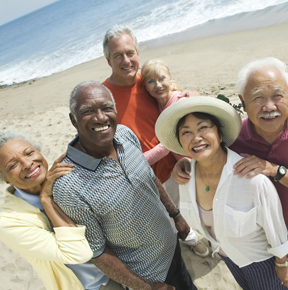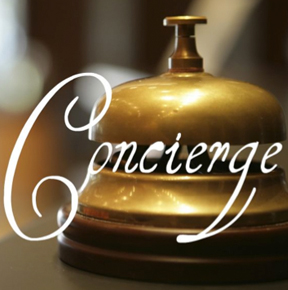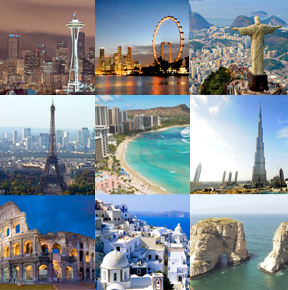Package price includes:
- Accommodation for 11 nights in centrally located hotels on double sharing basis;
- Breakfast 11 times per stay;
- All private transfers as mentioned per itinerary;
- Private services of local certified English speaking guide for sightseeing tours; Trakai join in tour;
- Entrance fees (Mir & Nesvizh Castles, Ozertso Museum, Trakai Castle, Rundale Palace &
- Garden, Turaida Castle, Kadriorgi Castle, Seaplane Harbor)
- All applicable taxes and service tax
Package does not include the following services:
- Belarusian Visa invitation letter 35 EUR per pax;
- Flight ticket Minsk – Vilnius, around 56 EUR;
- Any expenses of personal nature such as phone calls, laundry, mini bar, tips etc.
- Any international air tickets charges
- Travel insurance
- Cost incurred in case of hospitalization or evacuation etc.
- Tips and porter charges
- Any other service/s not specified above.
DAY 1: MINSK
Arrival in Minsk. Transfer to hotel, check in. Minsk City tour in the afternoon.
Minsk city tour (3 hrs, walking and driving)
Minsk Old Town – today’s Freedom Square is one of the top Minsk tourist attractions, this area today features a number of significant historic buildings. Restored and renovated churches, cathedrals and secular buildings (Minsk Town Hall among them) will help you to delve in the country’s past, with me telling you the most fascinating facts and myths.
Our Minsk sightseeing will then take us along Winners’
Avenue, an example of architectural past and future of the Belarusian capital to the Trinity Suburb – the restored 19th century Minsk district. Once a suburb of Minsk, the Trinity area is now a centrally located island of the past and a scenic walking venue, particularly in summer. Time permitting you will have a few minutes to buy some Belarusian souvenirs from a local shop. The Island of Tears in Minsk is a must-see of any tour around our capital – a deeply symbolic poignant memorial to the Soviet soldiers who died overseas.
Overnight in Minsk.
DAY 2: MINSK
Breakfast at the hotel.
Nesvizh and Mir tour (~ 7hrs, walking and driving, 280 km return)
The Nesvizh and Mir tour will introduce you to the top Belarus tourist attractions – the monuments of architecture in Belarus included in UNESCO World Heritage List.
First we will head for the famous palace-and-park complex in Nesvizh that is 120 kilometers away from Minsk. Founded at the end of the 16th century by the Radziwills, the palace was a combination of several architectural styles. In the 19th century a huge park was laid out nearby and is a perfect place for a walk even today. The palace was used as a health resort which saved it from destruction. The Nesvizh palace-and-park complex is also a part of the World Heritage and today, when the restoration of the castle is almost complete, it is open to public.
Mir Castle (30 km away from Nesvizh) was founded in the early 16th century not far from Mir borough as a residence
and was pretty expensive for its time. After the new hosts – the Radziwills – took over the castle, it was rebuilt into a magnate palace and beside thick curtain walls, loopholes, barracks and utility buildings it also featured luxurious apartments of the noble family that were appointed with works of art. Successive wars and decades of neglect resulted in complete decay of the castle by the end of WWII. It is only after the inclusion of the monument in UNESCO World Heritage List and a long restoration process that Mir Castle regained a part of its former luxury and was open for the visitors.
Overnight in Minsk.
DAY 3: MINSK
Breakfast at the hotel.
Ozertso Village Museum tour (4hrs, 60 km return, walking and drive)
This tour takes you into the Belarusian countryside where an original open-air village museum is located. Its exhibits are authentic wooden village buildings collected from across different ethnographic regions of Belarus. Arranged into several streets these manors give you a clear picture of the 19-century Belarusian village. In the traditional village buildings – houses, barns and churches – household tools and other items of the everyday life of a Belarusian peasant are exhibited.
Transfer to Minsk airport and departure to Vilnius at 17:35
18:10 arrival to Vilnius. Transfer to hotel and check in. Overnight in Vilnius.
DAY 4: VILNIUS
Breakafast at the hotel.
Trakai join in Tour (4 hrs, walking and drive)
Trakai town is situated lies on a narrow cape between 3 lakes, and it is famous for impressive Trakai Castle. Trakai and Trakai Castle are important to Lithuanian history.
Associated with Grand Duke Gediminas, a medieval
Lithuanian hero, Trakai rose to importance before the Grand Duchy of Lithuania joined with Poland. The area began to develop in the 1400s with its castle as the center of the action, though the area saw human habitation long before these permanent structures were built. Trakai Castle Museum is situated in two castles – one on an island in the middle of a lake, and one on the shore. Historically, communities of Karaims, Tatars, Lithuanians, Russians, Jews and Poles lived here.
Vilnius Old Town Tour (2hrs, walking)
Enjoy a guided tour in historic Vilnius Old Town, one of the largest old towns in Eastern Europe. Visiting the most important sights like Cathedral Square with the Dome Church and Clock-Tower, St. Anne’s Church, St.Bernhardin’s Church, Town Hall Square and Vilnius University with St. John’s Church, the Gates of Dawn with the holy image of the Virgin Mary, and the Russian
Orthodox Church of the Holy Spirit. During the tour your guide will also show you Gediminas Castle and Tower and beautiful St.Casimir`s Church. Vilnius is often called a Baroque city. However, the ruins of castles, narrow streets, church spires, bell towers, red tile roofs and residential cellars testify that Vilnius has had major influence from the Gothic style. In the 16th century Gothic became intertwined with Renaissance, and in the 17th – 18th century Baroque buildings started to appear.
Overnight at Vilnius.
DAY 5: VILNIUS – KAUNAS
Breakfast at the hotel. Check out and drive to Kaunas. Check into the hotel in Kaunas.
Kaunas City tour (2 hrs, walking)
Walking City tour of Kaunas, including the Old Town of Kaunas with St George’s Church, Kaunas Castle built at the confluence of the Nemunas and the Neris rivers, the courtyard of the Theological Seminary, the Town Hall Square surrounded by former 16th – 18th century merchants’ dwelling houses and baroque churches – the Jesuit Church and the Cathedral, the Church of Vytautas dating back to the 14th century – and the Perkunas (Thunder) House (no visits inside); a walk on the central street – Freedom Avenue – bustling with street vendors, musicians, cafes and souvenir shops; afternoon visits include Ciurlionis Art Gallery.
Overnight in Kaunas.
DAY 6: KAUNAS – HILL FO CROSSES – RUNDALE – RIGA
Breakfast at the hotel. Check in. Transfer to Latvia, on the way visit Hill of Crosses and Rundale Palace.
Hill of Crosses
The Hill of Crosses is located 12 km north of Siauliai. Over the centuries, crosses, giant crucifixes, carvings of Lithuanian patriots, statues of the Virgin Mary and thousands of tiny effigies and rosaries have been brought here by Catholic pilgrims. The number of crosses is estimated at more than 100,000.
Rundale Palace and Garden
Built during 1736 – 1740 as summer residence of Duke of Courland Ernst Johan Biron, a well-known figure in the Russian Court, Rundale Palace is the pearl of Baroque and Rococo art in the Baltic States. The palace was built and designed by the Russian court architect Francesco Bartolomeo Rastrelli. The interior decorations were created by a sculptor from Berlin Johann Michael Graff and Italian painters from St. Petersburg Francesco Martini and Carlo Zucchi.
The Rundale Palace is the pride of the beautiful French garden with artificial canal, an intricate maze of allées, cross paths, pergolas and bosquets. The bosquets feature an impressive; almost one hectare large, rose garden reflects the history of cultivating roses in Europe from the early 18th century till nowdays. The Rundale Palace is like a Versaille of Latvia and its significance has far outgrown the borders.
Rundale Palace Garden
The selection of plants for the park is based on information obtained from 18th century garden descriptions and books on Baroque gardens. The park of Rundale Palace is an essential part of the palace complex; it has retained its original layout without any significant changes. The garden was created between 1736 and 1740, at the same time as the palace was constructed. Cartography and inventory carried out in 1974 revealed that in the 19th century trees in the park were still planted according to Rastrelli’s design.
Arrive in Riga in late afternoon. Check in to hotel and overnight in Riga.
DAY 7: RIGA
Breakfast at hotel.
Riga Old Town (2 hrs, walking)
A walking tour through Riga Old Town seeing remarkable sites like St.Peter’s Church with its famous rooster, St.Jacobs Church, Dom Square and Dom Cathedral, home to one of the world’s most valuable historic organs. The Powder Tower and city walls will make you feel the breath of the medieval. The guide will tell you about the oldest stone residential dwellings in Riga, the Three Brothers, the Great and Small Guilds, and the fortification wall of Riga with the Swedish Gate the last surviving gate in the wall.
The guide will introduce you to the intriguing story of the Cat House and show you Town Hall Square with the beautiful and elegant Blackheads House. The tour will take visitors to Riga Castle founded in 1330, the Parliament, the Monument of Liberty and fantastic Riga`s Opera House.
Art Nouveau district tour (2hrs, walking)
After lunch drive through Art Nouveau district to Sigulda. Walk to Art Nouveau district. Riga is like a museum of architecture, covering periods from Gothic to Classicism. But the real treasure of the city is the largest and best preserved collection of Art Nouveau buildings in the world. This fact was corroborated by UNESCO in 1997 and now the central section of Riga is included in the UNESCO World Heritage List. Riga is sometimes called the “capital” of Art Nouveau thanks to the heritage of 800 buildings of Art Nouveau. The exteriors of the Art Nouveau buildings are imaginatively decorative and won`t leave guests incurious or without an opinion.
Overnight in Riga.
DAY 8: RIGA – JURMALA – RIGA
Breakfast at the hotel.
Riga Central Market (1-1,5hrs)
Visiting Riga Central Market – one of the Europe’s largest markets covering 72 000m2, built from five zeppelin hangers left over from the First World War. Since beginning Riga Central Market was built with 24 freezers, many elevators and laboratories.
Jurmala Tour (3 hrs, 30 km one way)
Take a train to Jurmala – a world-famous seaside resort situated only 20 km from Riga. The natural curative features of this place were already well known more than 150 years ago. Nowadays endless golden beaches, Baltic Sea, salubrious air and the unique beauty of pine forests attract tourists. Jurmala is a cozy European town composed of houses plunged into the parks and forests. Here you can come across wooden country houses from beginning of the 20th century as well as modern cottages.
Surrounded by pine trees, the wooden cottages of Jurmala are unique monuments of cultural heritage; in which
Classicism, Art Nouveau, National Romanticism and Functionalism harmoniously co-exist. This place is a must for those who are planning to visit Latvia in spring or summer.
Return in Riga in afternoon by train. Enjoy the evening to yourself.
DAY 9: RIGA – SIGULDA – TALLINN
Breakfast at the hotel. Check out, drive to Estonia, on the way visit Sigulda.
Turaida Tour (3 hrs, 45 km from Riga)
Sigulda is a place where the beauty of nature is an integral part of the town. It is situated on a picturesque stretch of the Gauja River Valley and is known as the “Switzerland of Vidzeme” because of the reddish Devonian sandstone which forms rocks and caves on both banks of the river. The town is particularly beautiful on clear autumn days because of the rich range of colors in the trees. Discover historic monuments, museums, natural objects and attractions like Sigulda New Castle, Turaida Medieval Castle built in 1214, the wooden church built in 1750, and a sculpture garden dedicated to Latvian folklore on Dainu Hill, Gutmanis Cave – the deepest internal erosion cave in the Baltic states, measuring 19m deep, 12m wide and 10m high, is not only a natural wonder, but also a place steeped in myths and legends.
Arrive in the evening in Tallinn and overnight in hotel in Tallinn.
DAY 10: TALLINN
Have breakfast at hotel.
Tallinn Old Town (2hrs, walking)
Enjoy a walking tour in the UNESCO heritage listed Tallinn Old Town. During the tour, explore Holy Spirit Church, the 600 years old Gothic Town Hall, Alexander Nevsky Cathedral, the world`s oldest functioning Pharmacy on Town Hall Square and the 159 meters high Oleveste Church which was the highest structure in the world in the 16th century. Visit Toompea Hill for breathtaking views over the city. Toompea Castle was built in the 13th and 14th centuries and is the seat of Estonia`s parliament.
Have free time for lunch in Tallinn Old Town.
Kadriorg Park and Pirita
The Kadriorg and Pirita districts are long-time favorites among locals and foreigners. Kadriorg is famed for its impressive baroque palace and park complex built by Peter I, as well as the Estonian President’s residence. Pirita attracts thousands from the city and beyond with its well-developed beach.
A trip to Tallinn isn’t complete without a visit to this magnificent northern baroque palace, built by Peter the Great for his wife, Catherine I, in 1718. Designed by Italian architect Niccolo Michetti, the grandiose palace and surrounding manicured gardens are a prime example of Czarist extravagance, but just as important a reason to visit is that it is also home to the foreign art collection.
The vast park surrounding Kadriorg Palace is without a doubt the best place in town for relaxed strolling, pigeon feeding and life pondering. It was set up in 1718 as part of the palace estate, but has always been open to the public. In spring and summer visitors can see beautiful, manicured gardens and flower beds, but most of the park has retained the look of the natural landscape.
Drive to Pirita district to discover the 1980 Olympic Games marina, the history of the St. Bridget’s Convent and gorgeous white-sand beach. The idea to found a convent in Tallinn, the capital of Estonia, was initiated by some Tallinn merchants already in 1400. In early 15th century when Pirita convent was built, Tallinn (Reval) had started to benefit from its privileged situation as a monopolistic transit trade point between east and west. During that medieval building boom in Tallinn town wall was reconstructed and many new towers built. Over night in Tallinn.
DAY 11: TALLINN
Breakfast at hotel.
Seaplane Harbour & Submarine Lembit
Visit the most visited museum in Estonia – the newly opened Seaplane Harbour where legends such as the Suur Tõll steam icebreaker, the Short Type 184 seaplane, and other life-sized exhibits are on display. Experience the feeling of living on the real 59 metre-long submarine Lembit. Until 2011, the Lembit was the world’s oldest still-in-watersubmarine. The interior of the sub has been thoroughly restored, giving visitors an extraordinary opportunity to see it as it was in its heyday.
Overnight in Tallinn.
DAY 12: TALLINN
Have breakfast at hotel. Check out and departure to Tallinn airport for the departure. Registration for international flight and departure.
Package price in Euro per person based on twin sharing room in High Season (1st of May 30th of September), for 2 pax:
3 Star hotel: 2093,00 Euros
4 Star hotel: 2202,00 Euros







